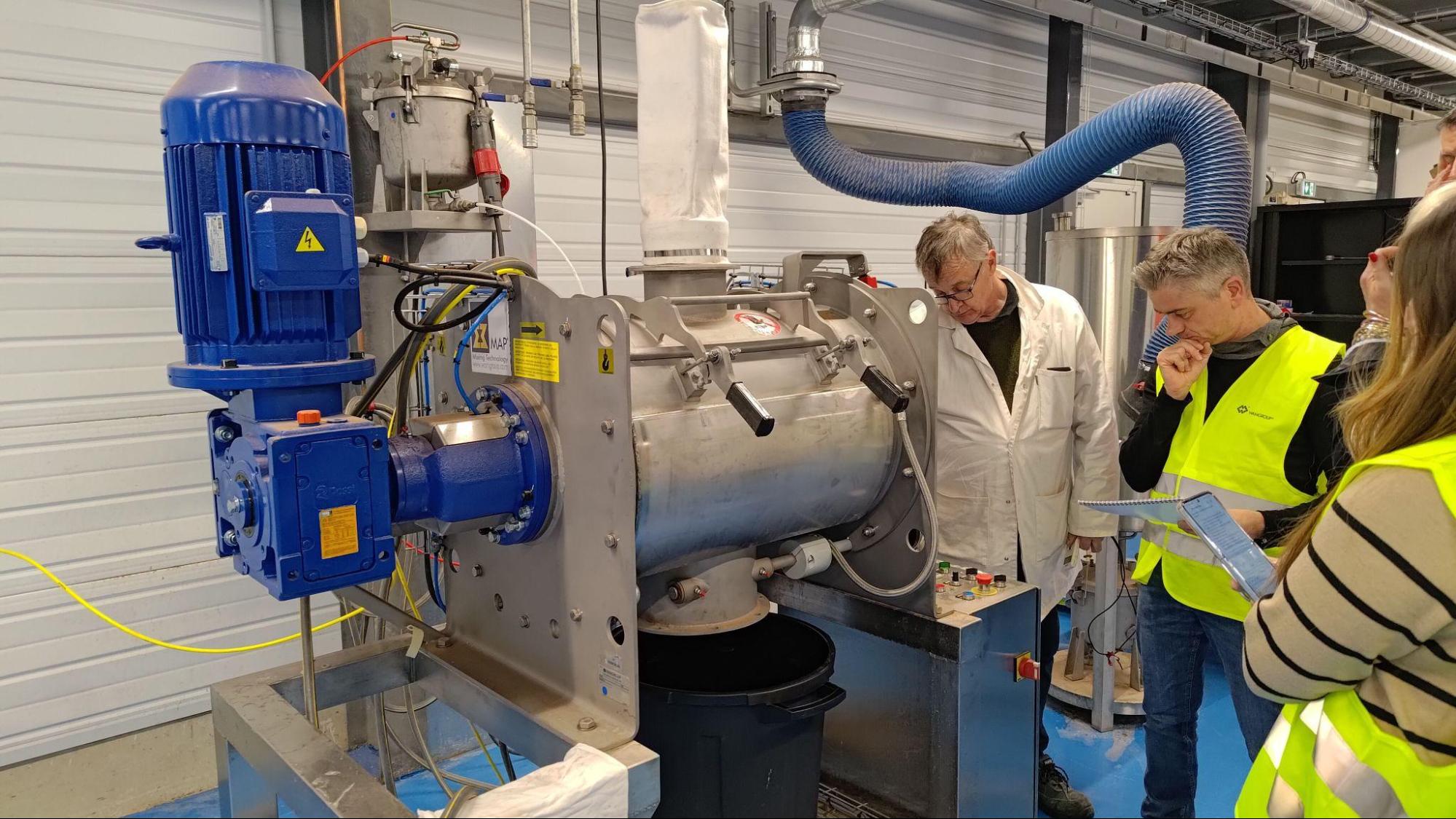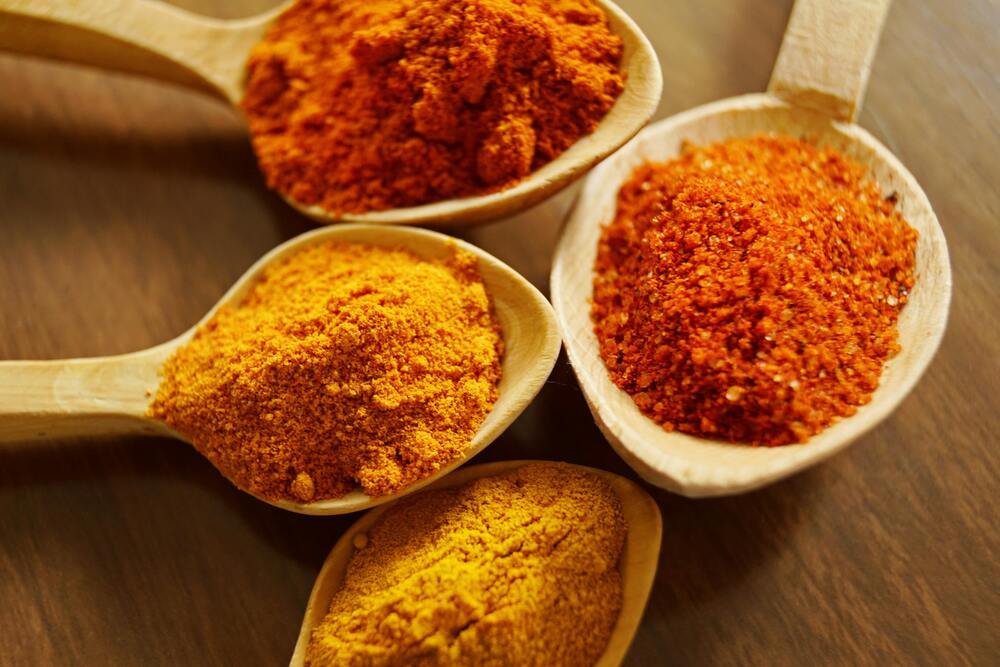Industrial blenders help optimise the manufacturing process by creating homogeneous, consistent products, which directly enhance production efficiency, ensure quality, and lower operational costs. ndustrial mixing is a precise, foundational process that transforms raw ingredients into a uniform final product (and not simply the use of agitation to achieve a smooth texture) Hence for businesses in the food manufacturing industry, knowing how to optimise this step is one of the most effective solutions to guaranteeing batch-to-batch consistency and minimising waste. This level of production process optimisation hinges on a methodical approach to equipment selection, starting with the following considerations:
1. Match the Blender to Your Powder’s Properties
The single most critical factor in process optimisation is selecting a blender that matches your powder’s specific characteristics, such as particle size, density, and flowability. This is because a mismatch between the powder and the blending mechanism is a direct route to operational inefficiency. It can even lead to common issues like segregation of ingredients, damage to fragile particles, and inconsistent batches, all of which compromise product quality and increase waste. To help you choose the right equipment, here is a breakdown of common industrial blenders and their ideal applications:
Ribbon Blenders
Ideal for free-flowing powders where ingredients share similar particle sizes and densities, a ribbon blender’s U-shaped trough and dual-helical agitator provide a gentle yet thorough mixing action. This makes them highly efficient for a wide range of applications, from spice blends to baking mixes.
Paddle Blenders
When dealing with mixtures containing diverse particle sizes or fragile materials, such as whole oats or flakes, paddle blenders are often a better choice. Paddles can “lift and scoop” to tominimise shear force, effectively preventing both segregation and product degradation.
Tumble Blenders (V-Blenders)
For cohesive powders prone to clumping or for applications that require extremely gentle handling to prevent particle breakdown, tumble blenders are an excellent choice. The V-shaped vessel rotates, allowing the material to converge and divide, achieving a uniform blend with minimal energy input.
2. Leverage Key Features for Maximum Powder Blending Efficiency
Once the appropriate blender is selected (based on the properties of your ingredients), the next step is to leverage modern engineered solutions tailored to ensure maximum powder blending efficiency. Depending on the system’s requirements, these can involve breaking up lumps, reducing waste, and ensuring absolute batch consistency.
High-Speed Intensifiers
For cohesive powders or when uniformly dispersing minor ingredients like pigments, vitamins, or active compounds, high-speed intensifiers or ‘choppers’ are crucial. These devices break up lumps and ensure that every particle is evenly distributed throughout the batch during the mixing process
Full-Discharge Mechanisms
Features such as bomb-bay doorscan minimise the amount of residual powder left in the blender after discharge. This design element directly reduces product waste, shortens cleaning times, and helps prevent the cross-contamination of subsequent batches.
Automated Controls
Integrating your blender into the plant’s control system, like SCADA, enables the programming of precise, repeatable mixing recipes. Automation eliminates the risk of human error in timing, speed, and ingredient addition, and therefore guarantees the consistent quality that is non-negotiable in modern food manufacturing solutions.
3. The Critical Role of Maintenance and Operation
Even the most sophisticated blender will underperform without a commitment to two critical factors: proactive maintenance and skilled operation. These elements are essential for unlocking the full, long-term potential and reliability of your system.
Maintenance
A proactive plant and system maintenance schedule is essential for reliability. For powder handling equipment, this means regularly checking seals to prevent dust leaks, a significant safety and contamination risk, and ensuring all internal surfaces remain smooth to avoid build-up material that could compromise batch purity.
Training
Proper operator training is fundamental for maximising throughput. By training your operators on the proper way of handling mixers, they will be able to manage different powder behaviours, execute correct cleaning-in-place (CIP) procedures, and safely operate the machinery, ensuring both product qualityand operational uptime.
Achieve Optimisation with an Integrated Powder Conveying System
Production process optimisation is the process of refining your operational methods to get the best possible results in terms of efficiency, quality, and cost. It is a holistic view of what the entire production line should be, rather than of a single efficient blender. Proper optimisation is the combination of selecting the correct equipment, strategically utilising modern features, and a firm commitment to maintenance and training that delivers tangible results. At Pneu Powders Systems, we specialise in engineering complete food manufacturing solutions: from designing the pneumatic powder conveying system that feeds the blender to managing the controlled discharge of the final mix. By integrating every component into a seamless, automated system, we help you achieve uncompromised quality and peak operational efficiency. Contact us today for more information on how we can help optimise your manufacturing and production processes.




